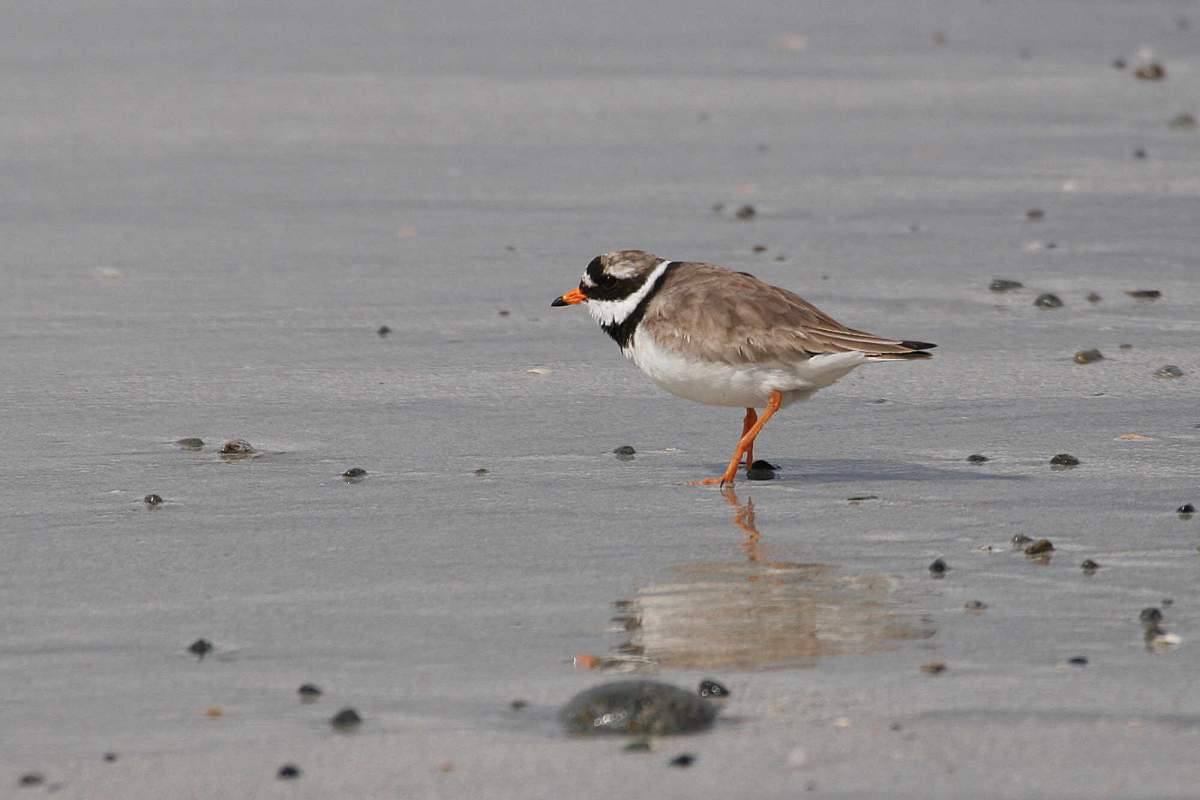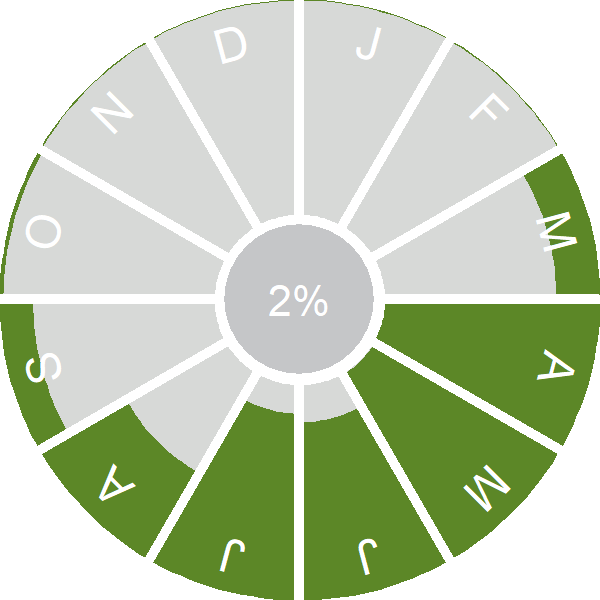Little Ringed Plover

Introduction
This attractive small wading bird is a relatively new addition to the British breeding avifauna, first recorded nesting here in 1938.
Little Ringed Plovers are summer visitors to Britain, sometimes arriving as early as mid-March. Originally associated with gravel workings in central England, they have now colonised seasonally wet areas across the post-industrial landscapes of the north-west. In Wales and Scotland, new colonists use river gravels for nesting.
Easily confused with its commoner coastal cousin, the Ringed Plover, this species prefers fresh water. It is a daintier bird, has more subtle colours and lacks a white wing-bar when seen in flight. A good close view reveals the diagnostic yellow eye-ring.

Key Stats
Identification
ID Videos
This section features BTO training videos headlining this species, or featuring it as a potential confusion species.
Ringed Plovers
Songs and Calls
Call:
Status and Trends
Conservation Status
Population Change
The first recorded breeding in the UK occurred in Hertfordshire in 1938 (Conway et al. 2019) and a count of at least 467 pairs was made in 1973 (Parrinder & Parrinder 1975). The last national survey was carried out in 2007 and produced a population estimate of 1,239 (1,175–1,311) pairs, with both the population and the range increasing considerably since 1984 (Conway et al. 2019). Although based on incomplete information, more recent RBBP data suggest that numbers have remained stable in the 15 years to 2019 (Eaton et al. 2021).
Distribution
The breeding range of the Little Ringed Plover is centred on northern central and southeast England but the species also breeds sparsely in Wales and the lowlands of central and eastern Scotland. It is a rare new colonist in Ireland.
Occupied 10-km squares in UK
or view it on Bird Atlas Mapstore.
or view it on Bird Atlas Mapstore.
European Distribution Map
Distribution Change
Little Ringed Plovers only bred for the first time in Britain in 1938
Change in occupied 10-km squares in the UK
or view it on Bird Atlas Mapstore.
or view it on Bird Atlas Mapstore.
Seasonality
Little Ringed Plovers are summer visitors, arriving from March onwards.
Weekly pattern of occurrence
The graph shows when the species is present in the UK, with taller bars indicating a higher likelihood of encountering the species in appropriate regions and habitats.

Movement
Britain & Ireland movement
Foreign locations of birds ringed or recovered in Britain & Ireland
Dots show the foreign destinations of birds ringed in Britain & Ireland, and the origins of birds ringed overseas that were subsequently recaptured, resighted or found dead in Britain & Ireland. Dot colours indicate the time of year that the species was present at the location.
- Winter (Nov-Feb)
- Spring (Mar-Apr)
- Summer (May-Jul)
- Autumn (Aug-Oct)

European movements
EuroBirdPortal uses birdwatcher's records, such as those logged in BirdTrack to map the flows of birds as they arrive and depart Europe. See maps for this species here.
The Eurasian-African Migration Atlas shows movements of individual birds ringed or recovered in Europe. See maps for this species here.
Biology
Productivity and Nesting
Nesting timing
Egg measurements
Clutch Size
Survival and Longevity
Survival is shown as the proportion of birds surviving from one year to the next and is derived from bird ringing data. It can also be used to estimate how long birds typically live.
View number ringed each year in the Online Ringing Report.
lifespan
Survival of adults
Biometrics
Wing length and body weights are from live birds (source).
Wing length
Body weight
Ring Size
Classification, names and codes
Classification and Codes
- Order: Charadriiformes
- Family: Charadriidae
- Scientific name: Charadrius dubius
- Authority: Scopoli, 1786
- BTO 2-letter code: LP
- BTO 5-letter code: LIRPL
- Euring code number: 4690
Alternate species names
- Catalan: corriol anellat petit
- Czech: kulík rícní
- Danish: Lille Præstekrave
- Dutch: Kleine Plevier
- Estonian: väiketüll
- Finnish: pikkutylli
- French: Pluvier petit-gravelot
- Gaelic: Trìlleachan-tràghad-beag
- German: Flussregenpfeifer
- Hungarian: kis lile
- Icelandic: Vatnalóa
- Irish: Feadóigín Chladaigh
- Italian: Corriere piccolo
- Latvian: upes tartinš, klienis
- Lithuanian: upinis kirlikas
- Norwegian: Dverglo
- Polish: sieweczka rzeczna
- Portuguese: borrelho-pequeno-de-coleira
- Slovak: kulík riecny
- Slovenian: mali deževnik
- Spanish: Chorlitejo chico
- Swedish: mindre strandpipare
- Welsh: Cwtiad Torchog Bach
Research
Causes of Change and Solutions
Causes of change
This species has been increasing north and west Europe since the 1960s, with climate change and habitat availability suggested as possible drivers of change (Snow & Perrins 1998). Newly created gravel pits continue to be an important habitat for this species (Conway et al. 2019).
Publications (1)
Breeding populations of Little Ringed Plover Charadrius dubius and Ringed Plover Charadrius hiaticula in the United Kingdom in 2007
Author: Conway G.J., Austin G.E., Handschuh M., Drewitt A.L. & Burton N.H.K.
Published: 2019
Newly published research by BTO has shed light on the differing fortunes of two small wading bird species breeding in the UK. Little Ringed Plover first bred in the UK in Hertfordshire in 1938. Breeding numbers have increased steadily since, accompanied by a range expansion to the north and west. The species is Green-listed in the UK Birds of Conservation Concern. The Ringed Plover, by contrast, is on the UK Birds of Conservation Concern Red list. Both species were surveyed in 1984, and again in 2007.
22.01.19
Papers


